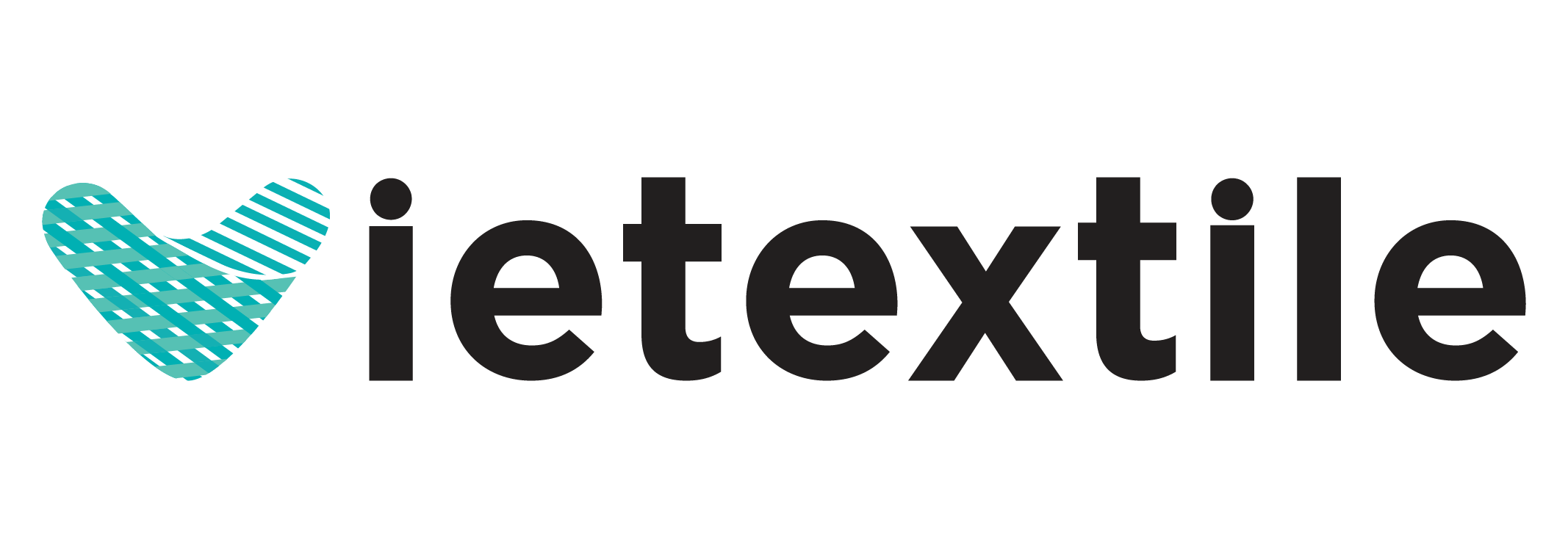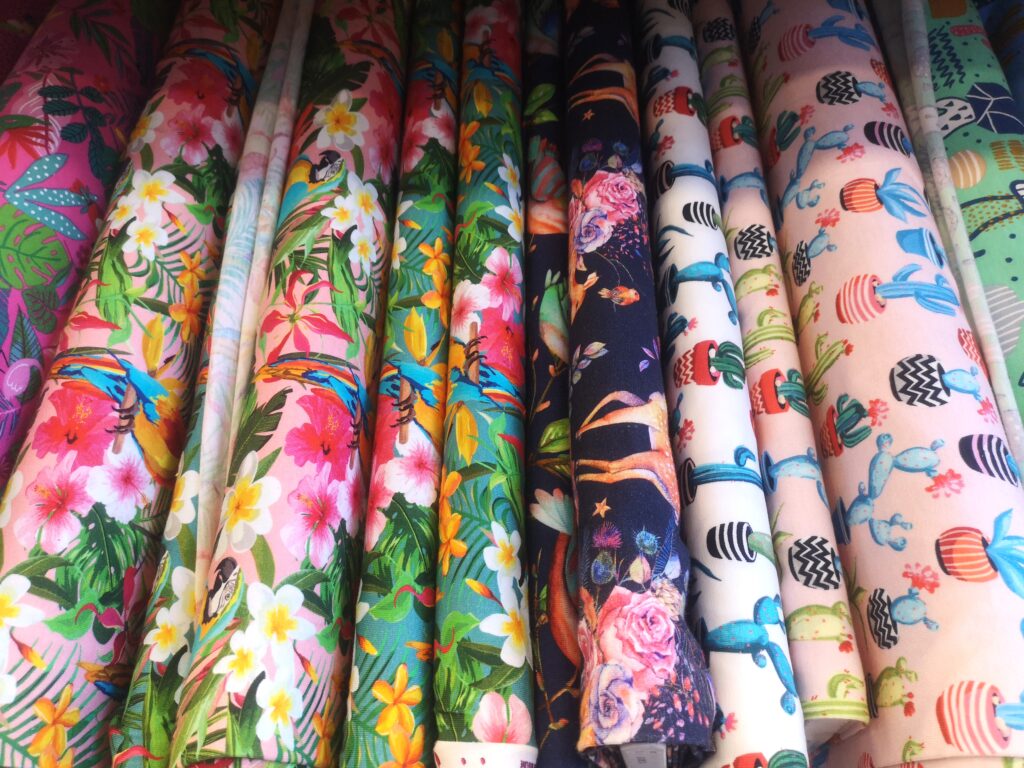Digital fabric printing technology is not only a powerful force in fashion but is also revolutionizing the interior design industry. From elegant curtains and unique sofa covers to sophisticated fabric wall art—everything can be personalized to a unique style thanks to this technology.
1. Overview of Digital Fabric Printing Technology
Nội dung tóm tắt
Toggle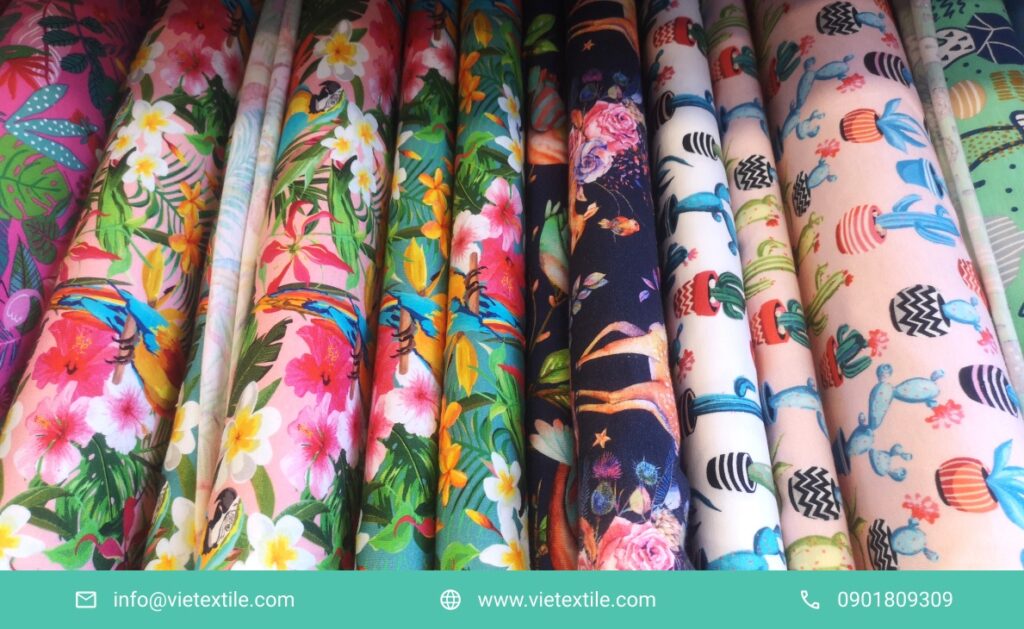
Digital fabric printing technology uses direct or indirect inkjet printheads to apply ink to the fabric surface with high precision, without the need for a printing plate. Digital printing allows for complex images and vibrant colors to be rendered, saving time compared to traditional printing methods.
Key Advantages:
Digital fabric printing technology not only creates high-quality finished products but also offers many outstanding advantages for modern interior design businesses. First, the flexible design personalization allows users to easily print patterns, motifs, or images that match their personal style or brand direction.
Second, digital fabric printing technology has no minimum quantity limits, allowing for sample printing or small-scale production while still maintaining a reasonable cost—something that traditional printing methods struggle to match. Furthermore, modern printhead systems help to reproduce details and colors accurately, thereby enhancing the aesthetic value and precision of each printed product.
Finally, digital fabric printing technology is highly regarded for its eco-friendliness: it consumes less water, minimizes chemicals, and reduces waste during the production process—making it very suitable for the current trend of green consumption.
2. Applications of Digital Printing Technology in Interior Design
2.1. On-Demand Printed Curtains
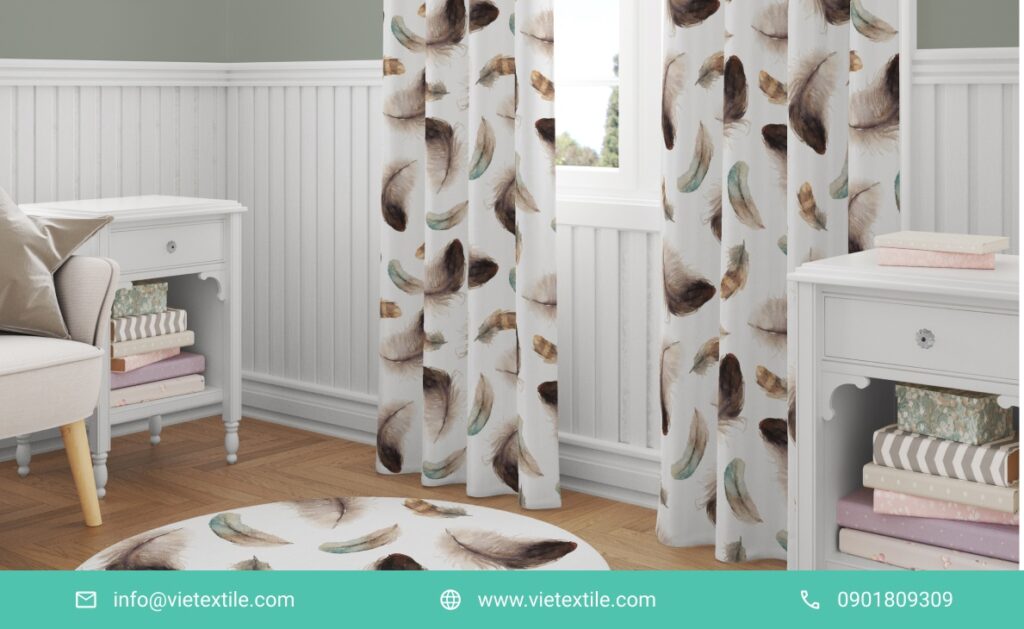
Curtains are no longer just a way to block out light; they are now an aesthetic highlight for a space. With digital fabric printing technology, users can order custom prints of patterns, landscapes, motifs based on feng shui, or personal preferences.
Materials and printing techniques: Curtains using digital fabric printing technology often use fabrics like polyester, cotton blends, or linen—materials that easily absorb ink and hold color well. Depending on the purpose of use, businesses can choose between transfer printing (for polyester fabrics) or direct printing (for natural fabrics).
Benefits: Printed curtains do not fade after multiple washes, remain soft, and are easy to clean and maintain. This is especially important for spaces like hotels, restaurants, or family living rooms—where aesthetics and durability are always a top priority.
2.2. Custom Printed Sofa Covers
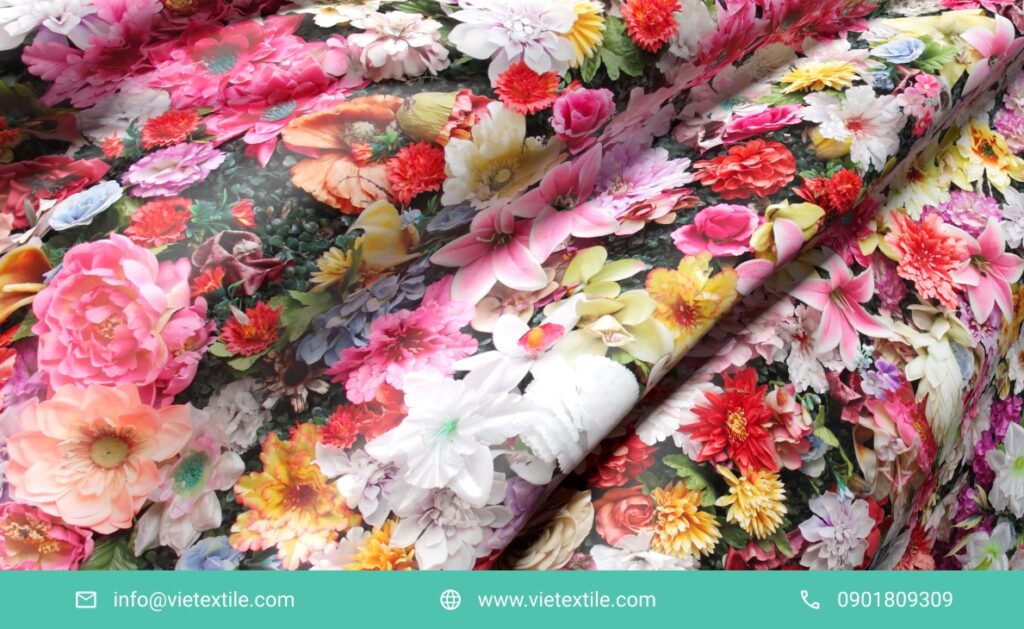
Sofa covers have long been difficult to personalize due to material and printing costs. Digital printing technology helps overcome that.
Customizable to interior style: Digital fabric printing technology allows for the printing of classic, modern, or retro patterns, meeting the diverse tastes of consumers as well as specific design projects.
Colorfastness and durability: Specialized inks bond firmly to the fabric, ensuring long-lasting color that won’t fade with use, even when sofa covers are subject to frequent friction.
Material cost savings: Since there is no need to print in large quantities as with traditional methods, businesses can print according to actual needs without worrying about excess or wasteful inventory.
2.3. Digital Printed Fabric Art
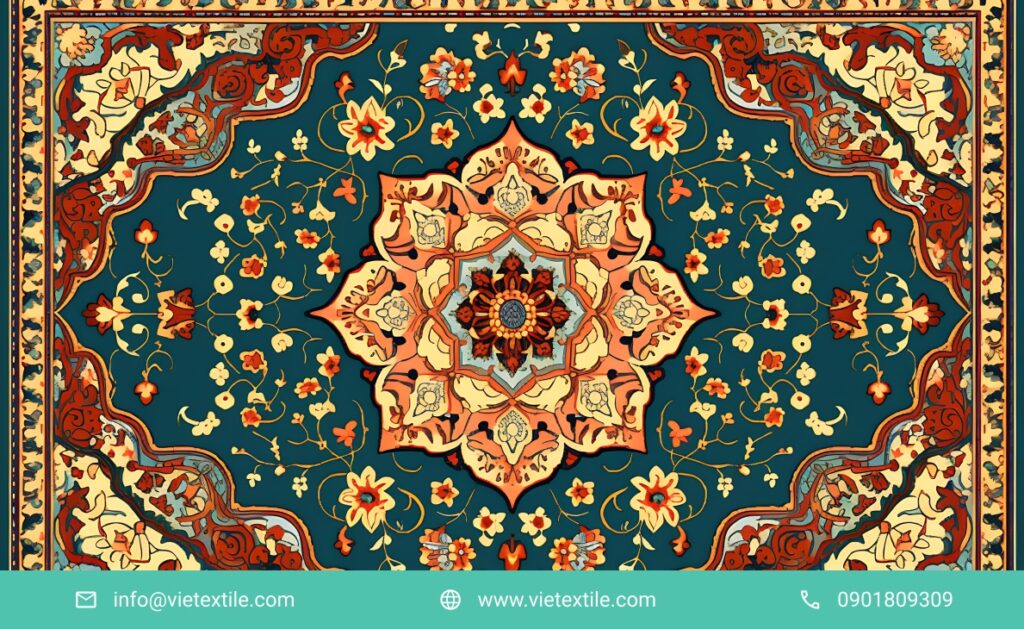
Fabric wall art printed with digital fabric printing technology is a new trend that is eco-friendly, lightweight, and easy to change with the seasons or for events.
Easy to transport and replace: Fabric art is much lighter than traditional oil paintings or canvas prints, which saves on shipping costs and makes it easy to change when needed.
Customizable content on demand: Users can print natural landscapes, inspirational quotes (typography), or even personal photos to match their living or working space.
Diverse applications: This type of art is particularly suitable for modern apartments, artistic cafes, or brand spaces that require high aesthetics and flexibility.
3. Fabric Types Suitable for Interior Printing
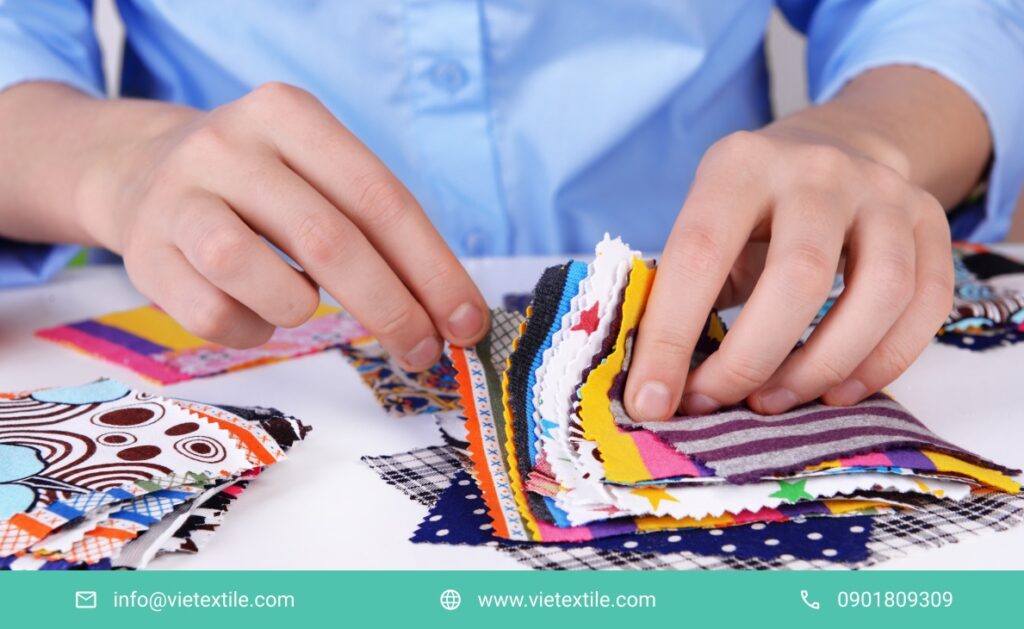
In the interior design industry, not all fabrics are suitable for digital fabric printing technology. Choosing the right material will affect ink adhesion, colorfastness, and the final aesthetic of the printed product. Here are three of the most popular and effective fabric types for digital fabric printing in interior design:
3.1. Polyester Fabric
This is the most widely used fabric in digital fabric printing technology due to its good ink adhesion, minimal shrinkage, and particular suitability for transfer printing. With reasonable costs and high durability, polyester is often used for curtains, sofa covers, and fabric art.
3.2. Cotton Blend Fabric
The combination of cotton and synthetic fibers helps cotton blends retain the soft, natural feel of cotton while ensuring dimensional stability and ease of printing. This fabric type is suitable for interior products that require high aesthetics and a friendly feel, especially in vintage or rustic-style designs.
3.3. Canvas Fabric
With a thick, sturdy texture and high rigidity, canvas is an ideal choice for digital fabric printing technology when creating wall art or interior items that require high mechanical durability. Canvas also absorbs ink well and reproduces sharp details in graphic designs.
4. The Future of Digital Fabric Printing in Interior Design
The combination of digital fabric printing technology and artificial intelligence (AI) is creating a trend of “real-time personalized interior design”—where customers can try out color schemes and patterns and receive their products quickly, without waiting for mass production.
The application of digital fabric printing technology is not just limited to curtains, sofas, or art; it is also expanding to bedding, tablecloths, and even soundproofing materials.
5. Conclusion
Digital fabric printing technology is opening a new chapter for the interior design industry: unlimited creativity, rapid production, and eco-friendliness. With the increasing demand for personalization, this is a flexible solution that helps interior design businesses keep up with trends and increase their competitiveness.
Not only does this technology meet the diverse tastes of modern consumers, but it is also in line with the sustainable development goals of the textile industry. Investing in digital fabric printing technology is a strategic move to optimize the production chain, enhance product quality, and assert a brand’s identity in today’s fiercely competitive interior design market.
Learn more about digital fabric printing technology:
- Fabric Wash: Production Process and Outstanding Benefits
- Temperature and Time: Factors Determining the Quality of Fabric Dyes
- Waterless Dyeing Technology Helps Reduce Emissions (VnExpress)
- CleanDye Technology Does Not Use Water (Coolmate)
6. Contact for Digital Fabric Printing Consultation for Interior Design
Are you looking for a reputable digital fabric printing provider to bring your unique interior designs to life—from curtains and sofa covers to decorative fabric art?
- Email: info@vietextile.com
- Hotline: 0901 809 309
- Website: https://vietextile.com/
Or leave a request to get a consultation on fabric samples, digital fabric printing technology, and costs suitable for your space.
